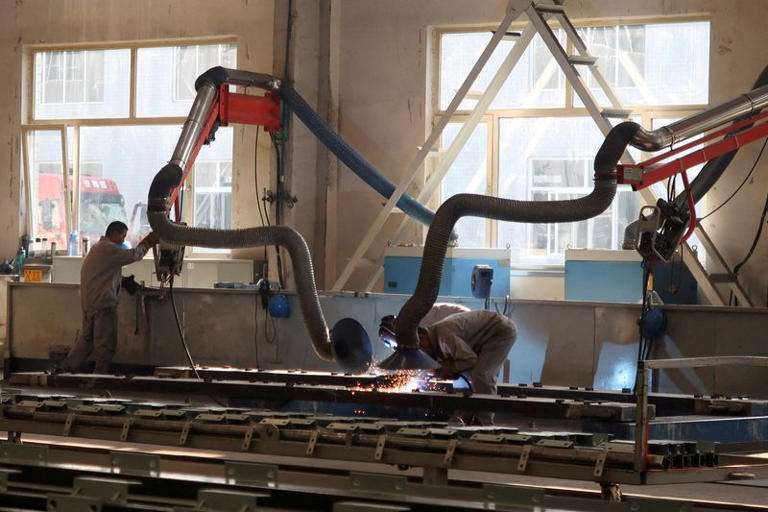China’s manufacturing sector experienced robust growth in May, with factory activity reaching its highest level in nearly two years. This positive trend was driven by increased production and new orders, particularly among smaller firms. The Caixin/S&P Global manufacturing PMI, a private sector survey, rose to 51.7 in May from 51.4 the previous month, surpassing analysts’ expectations of 51.5. This marks the highest reading since June 2022 and indicates expansion in the sector, as a reading above 50 signifies growth.
In an effort to counter weak domestic demand and address the ongoing property crisis, China has implemented measures such as increased infrastructure investment and support for high-tech manufacturing. However, the full impact of these policies on businesses and workers has yet to be fully realized.
It is worth noting that the positive sentiment reflected in the Caixin PMI contradicts the findings of an official PMI survey released on Friday, which showed an unexpected decline in manufacturing activity.
According to Zhou Hao, an economist at Guotai Junan International, the uncertain indicators and mixed data indicate that the economic recovery in the second quarter is struggling to maintain its momentum. One key question is whether China’s exports will continue to perform well in the upcoming months. The official PMI shows a significant drop in the export orders index, while the Caixin PMI indicates a relatively resilient performance. It is believed that the Caixin survey focuses more on smaller export-oriented companies compared to the broader official PMI. The Caixin survey reveals that output has increased at the fastest rate since June 2022, with companies in the consumer segment experiencing significant growth in May. Respondents attribute this growth to higher new work inflows, as both domestic and global demand support client interest in new products.
China’s economic growth forecast for 2024 has been raised by the International Monetary Fund (IMF) to 5% from the previous estimate of 4.6%, thanks to improved economic indicators and new policy measures in the first quarter. However, this forecast is still below the IMF’s earlier projection of 5.2% growth. On the other hand, Moody’s rating agency has increased its 2024 growth forecast for China to 4.5% from 4.0%, while maintaining its projection for 2025 at 4.0%. The outlook for China’s trade remains uncertain due to the sluggish global economy. Caixin reports that new export orders grew at a slower pace in May compared to the previous month’s 41-month high. Some survey respondents mentioned that recent trade fairs had generated new business opportunities, while others highlighted their strategic expansion into overseas markets. To meet the ongoing production demands, factories have increased their purchasing activity, with the quantity of purchases growing at the fastest rate in three years.
Producers’ confidence improved in May as they anticipated a boost in market demand domestically and internationally.
The average input costs saw a rise due to increasing prices of metals, plastics, and energy. In fact, the rate of inflation in input prices reached its highest level since October last year.
Despite this, employment conditions remained sluggish, with the job market contracting for the ninth consecutive month. However, the pace of job losses slowed down, with some manufacturers of consumer goods even witnessing a slight increase in their workforce.
